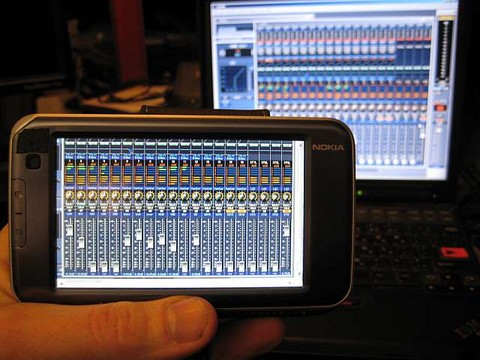
Once a precedent is set, it may never go away.
With the advent of digital mixing boards, users can clearly see the benefits - saving mixes for shows on a USB key, presets for front-of-house, monitors and effects, RTA, crossovers and even optimum 31 band EQ selections for typical performances; just don't tell the club owner too much about how easy it is!
As digital mixers come down in price, more clubs will be talked into owning them at the word of the house sound technician because the tech will want to learn digital mixing without buying their own board. This may also ensure that the house tech has guaranteed themselves a position, for a little while anyway, as they will know the system inside and out; and until other techs know specific mixers, there will be fewer choices of who to hire for a show.
By insisting on, or strongly suggesting digital mixers to a club owner, sound techs may be shooting themselves in the foot simply because situations will arise where the club hasn't got a sound person for the evening and will scramble to find someone who knows a particular digital mixer during the 'learning phase' of the digital club sound revolution (the phase we are beginning to enter). If the club owner doesn't find someone and the absent sound tech calls them and tells them to select 'Preset D' for a returning act, the club owner will now begin to see the potential of saving money at shows.
If an entire mix can be saved on a USB key for a particular act, and the mixers become more intelligent and are able to adjust the mix by sensing certain sound waveform information, then the club owner may only hire a house tech for 'certain shows', like new bands or high profile events, as they will no longer need to hire the sound tech for every show.
Think it can't happen? It is already happening in the analog world! Sound techs are sometimes asked to set up DJ's but not stick around to monitor the sound system. They are also asked to set up simple things such as workshops, panel discussions and other 'non-musical' events. Without proper monitoring, all hell can break loose during a show (I've been there many times).
So, how can sound techs protect their positions and get more work? Here are some suggestions in the dawn of the age of digital club systems:
1) Solidify your liaison skills - be a people person and demonstrate your importance as a sound tech. Be the 'go to' person in the club who communicates on behalf of musical talent, bar staff and management.
2) Stress the importance of and be good at troubleshooting - when there is a problem, be sure to let everyone know about it and how you solved it. This can come up in a casual conversation after the show, when nobody had any idea there was a problem, or in the case of an obvious problem, be sure to solve it quickly! TIP - always ask "What if 'this' happened?" and have a plan B and a plan C! be proactive!
3) Raise your rates for emergency calls - create a rate sheet for certain services if they start using your services less.
4) Don't give away all of your secrets - every sound person or AV technician has tricks of the trade. Be careful of who you tell these to! Your secrets are partially what keep you valuable. I have solved many on-site problems with my bag of tricks. I let the people know what the problem was and that I had a solution. But, I was once asked by a meeting planner if I could make a list of my break-out kits so she could buy some and have them ready. I told her that every situation is different and it takes more than just a few cables and connectors to solve a problem, and that critical thinking is involved (something a digital console can't 'yet' do).
Summary - digital mixers are coming down in price. Whatever analog skills a sound tech has may not be good enough without learning the skills I suggest above. Mark my words - when a club owner sees potential for saving money, they will jump at the chance! Now it's time for us to play the game differently.
Buck Moore,
Owner, B4UShowit.com




